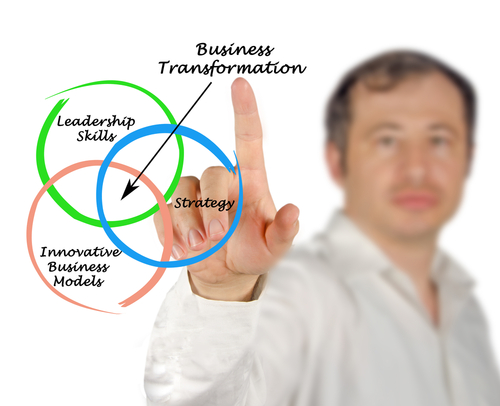Numerous established and hitherto successful industries have been disrupted by new entrants introducing new and bold digital business models. Many well-known companies are now extinct and more will likely to follow. Defining and pursuing a strategy for digital transformation in your business area before someone else does is a top priority for any Managing Director, Senior Management Team or Board of Directors. It demands management action in eight key areas all of which involve fundamental business transformation, operational and implementation risk and significant disruption, but, failure to act, risks a fate far worse than disruption; extinction. This is the digital imperative.

What does this mean for you and what should you do about it?
Ask the right questions
- “How will digital technologies change how we create value for our customers?”
- “How will digital technologies help save costs?”
- “What is the overall task facing our customers?”
- “How will digital technologies better and more fully fulfil and facilitate this overall task?”
- “What business are we really in?”
Disrupt or be disrupted
Asking these questions provides the opportunity to challenge the status quo and disrupt your own business model before others do it to you. Analogue businesses risk attack from new entrants looking to do things in a different way. It follows that you must do things in a different way yourself. Be your own attacker, launch products and services that attack your current offering.
Collaborate, acquire or build
The normalisation of digital lifestyles is changing consumer expectations of what websites offer and do. Digital natives comfortable with and hungry for digital technology and services seek seamless, integrated open and transparent offerings that appear to come from a single provider. This then is about joining up end-to-end business processes so they appear seamless to end users thus enabling them to complete transactions online rather than just access information or do only part of the overall task they are seeking to complete. Rather than focus on a narrow part of a value chain, companies must either, a) secure their position in the broader digital ecosystem of their value chain by cooperating and collaborating via APIs with other digital players in the network. In this way they work together towards a common goal to achieve complete end-to-end alignment of the value chain for customers, or b) they must acquire or build those business to achieve the same ends.
Such seamless, integrated offerings create new opportunities to address unmet consumer needs and pain points and innovate around them. Collaborative platforms and online market places allow customers and providers, devices, applications, data, products and services to work together and collaborate in new ways and this is core to any digital transformation strategy.

Create value from your data
Companies sit on vast amounts of data. Companies need to mine and make better use of data to create new opportunities and achieve cost savings. The use of advanced analytical and predictive tools and technologies helps to change the interaction model with customers from infrequent and random one off encounters and transactions to more targeted personalised digital encounters promoting repeat rather than one-off sales opportunities and more durable open ended customer relationships. Personalised updated offers or services would also take previous online interactions, purchases, and digital product or service usage data into consideration providing a much richer experience and added value for customers.
Adopt an agile strategy
With customer needs and expectations, technology and the competitive environment changing rapidly, it is no longer realistic to plan for the long term. Agile methods borrowed from software development advocate frequent short iterations of creating, testing, refining and adapting. This promotes a learn-by-doing approach. Companies must rapidly and frequently deliver products and services to meet real consumer needs, try these out, scale up what works or pivot fast when they fail and try something else, This requires an organisational culture that supports agile specifically; individual autonomy, risk taking and experimentation, collaboration and self-organising team effort. It needs an organisational culture that encourages and supports its own disruption. Analogue businesses with an industrial era hierarchical command and control management culture will need to change. In an era of digital transformation, making the necessary personal and cultural adjustments are prerequisites for success. The Internet is not just about technology, people and organisations have to change too. See article: A Necessary Adjustment.
Digitise internal processes and back office
It is necessary but not sufficient to digitise your customer offering. You must also digitise your internal processes and back office to ensure to ensure leanness, agility, and lower cost. Remove manual processes and digitise them. This helps improve performance and is enabler for an agile strategy and better use of data to improve customer experience and increase value.
Foster digital leadership
Digital leaders are different from industrial leaders. They network and collaborate rather own and dictate. They participate and share rather than command and control. They ask the right questions, they disrupt before they are disrupted, they collaborate with or acquire other businesses in their digital ecosystems to provide a seamless integrated end-to-end offering for customers. They make best use of their data to cut costs and provide a richer customer experience as well increase sales opportunities and promote more durable open ended customer relationships. They prototype agile strategies learning from their experiences to do more of what works and pivot fast when they fail. They digitize their internal business processes and back offices to facilitate digital transformation across the whole of the business.
Act
To reiterate, companies that respond to the digital imperative take on fundamental business transformation, operational and implementation risk and significant disruption, but failure to respond to the digital imperative risks a fate far worse than disruption; extinction.